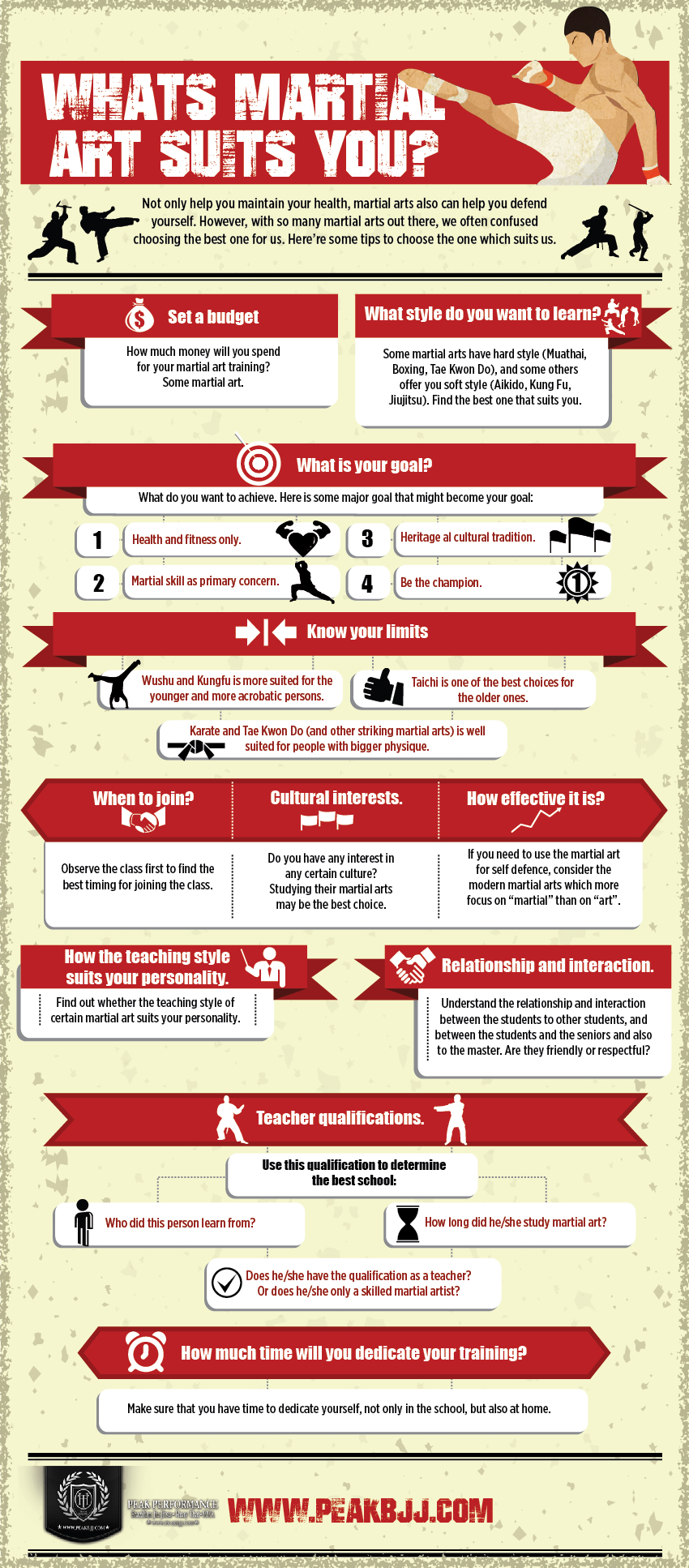Discover The Tricks Behind Karate, Taekwondo, And More! Unveil The Hidden World Of Martial Arts Designs In This Utmost Guide
Discover The Tricks Behind Karate, Taekwondo, And More! Unveil The Hidden World Of Martial Arts Designs In This Utmost Guide
Blog Article
Written By-Carlson Pierce
Are you tired of feeling overwhelmed by the huge globe of fighting styles? With global martial arts - ch.025 to select from, it can be simple to get lost in a sea of punches, kicks, and mystical names. Yet concern not!
This discussion will demystify the different martial arts styles, taking you on a trip from the effective strikes of Karate to the vibrant kicks of Taekwondo. Get ready to uncover the origins, techniques, and ideologies behind these old art forms.
So, tighten your belt and prepare to embark on an enlightening expedition right into the captivating globe of martial arts.
Origins of Martial Arts Styles
The origins of fighting styles styles can be mapped back to old worlds and their need for protection and combat techniques. Throughout background, different societies created their very own distinct approaches of combating, each with its own set of strategies and viewpoints.
In China, as an example, martial arts designs such as Kung Fu and Tai Chi were developed as a way of self-defense and improving physical and mental wellness.
In Japan, the samurai warriors produced designs like Karate and Judo, concentrating on technique, precision, and proficiency of the body.
Likewise, in Korea, Taekwondo emerged as a martial art stressing high kicks, quick movements, and psychological determination.
These very early civilizations laid the structure for the varied array of martial arts styles that exist today, each with its own rich history and social relevance.
Methods and Training Techniques
To grasp martial arts designs, professionals should find out numerous techniques and training methods.
Techniques are the specific activities and activities made use of in combat, such as strikes, kicks, throws, and blocks. https://www.khaleejtimes.com/sports/uaes-mma-fighters-make-history-with-record-12-medal-haul-at-immaf-youth-world-championships fighting styles styles have their own unique collection of methods that specialists need to understand with rigorous training.
Training methods vary depending on the style, yet they usually include a mix of physical fitness, drills, sparring, and kinds.
Physical fitness is critical to build stamina, flexibility, and endurance. Drills help professionals fine-tune their methods and improve their speed and accuracy.
Competing enables professionals to exercise their techniques in a regulated, realistic atmosphere. Kinds, additionally referred to as kata, are prearranged sequences of motions that help experts establish muscular tissue memory and focus.
Ideologies and Principles
Exploring the viewpoints and concepts of fighting styles styles can provide you with a much deeper understanding of your selected self-control. Each fighting style has its own unique ideology and set of directing principles that shape the method it's practiced.
As an example, Karate emphasizes discipline, regard, and self-control. It shows professionals to focus their body and minds, enabling them to safeguard themselves while preserving a feeling of internal peace.
On the other hand, Taekwondo places a strong emphasis on speed, dexterity, and adaptability. Its principles are rooted in the tenets of courtesy, integrity, perseverance, self-discipline, and resolute spirit.
Final thought
Since you have actually discovered the beginnings, methods, and approaches of different martial arts styles, you have a deeper understanding of these old self-controls.
Picture a young karate trainee, experimenting undeviating determination and focus, breaking through boards with an effective punch.
Their trip showcases the devotion and stamina needed to understand a fighting style, advising us that with technique and willpower, anything is feasible.
